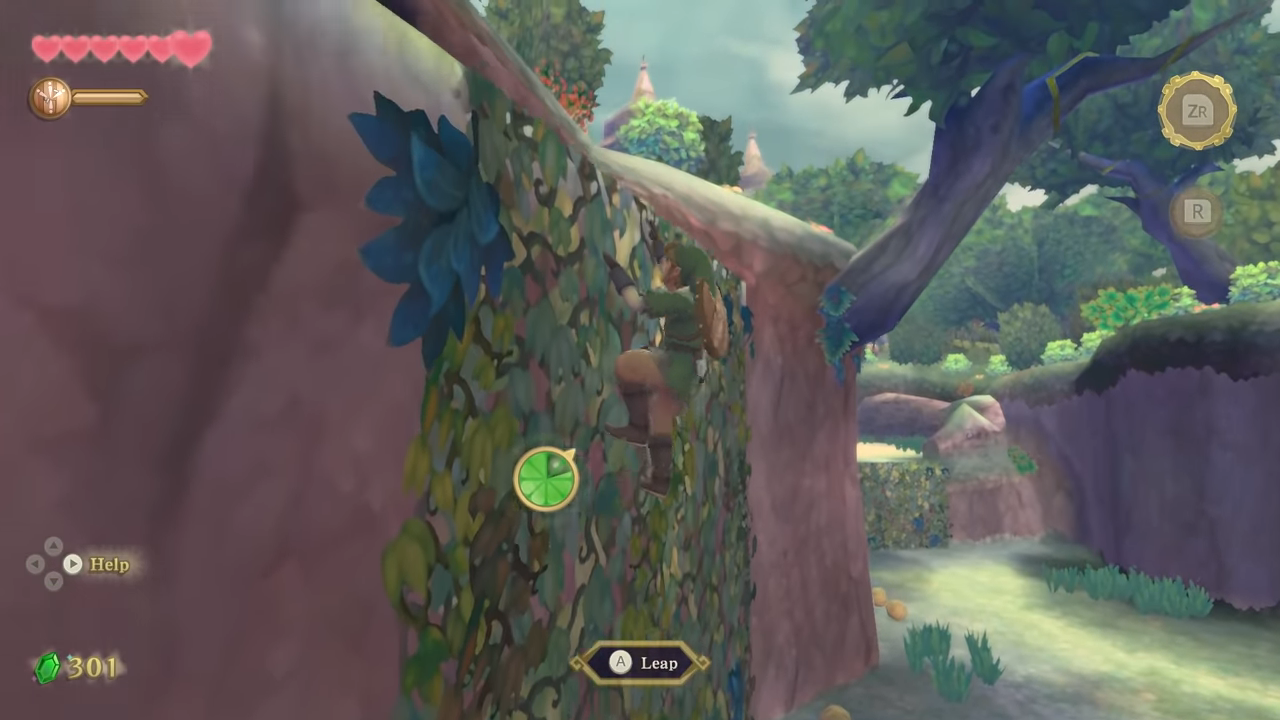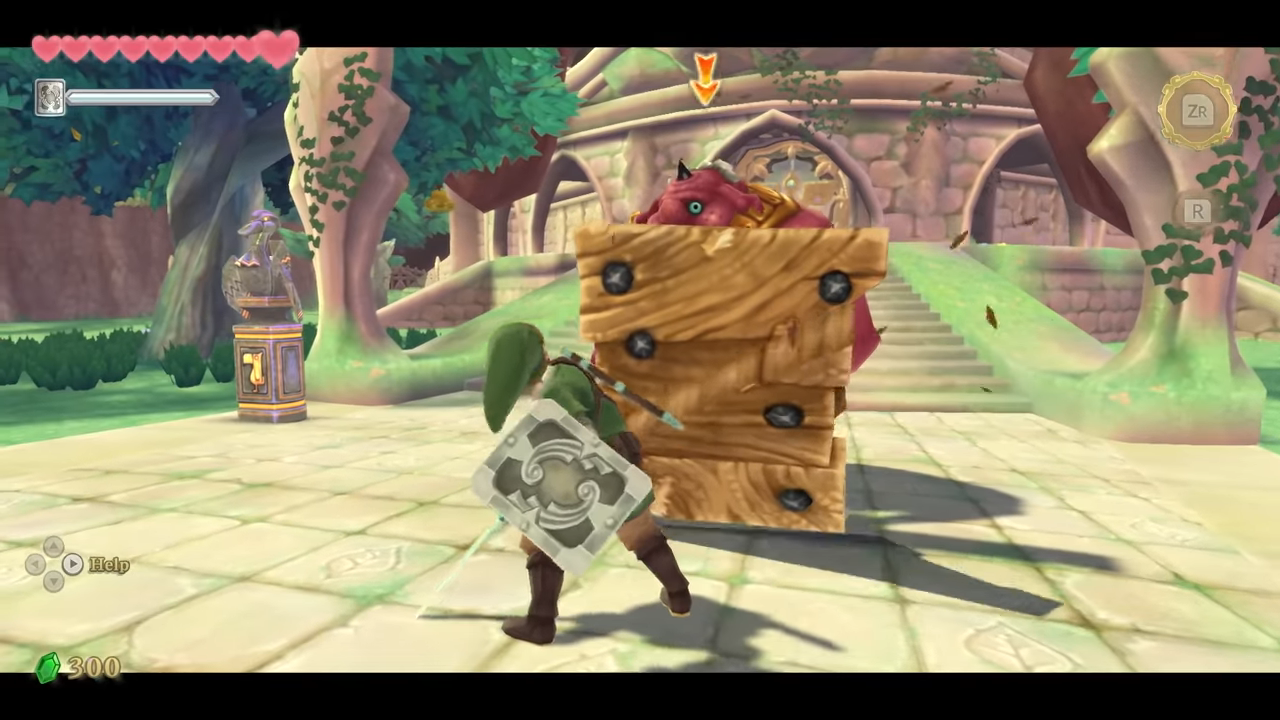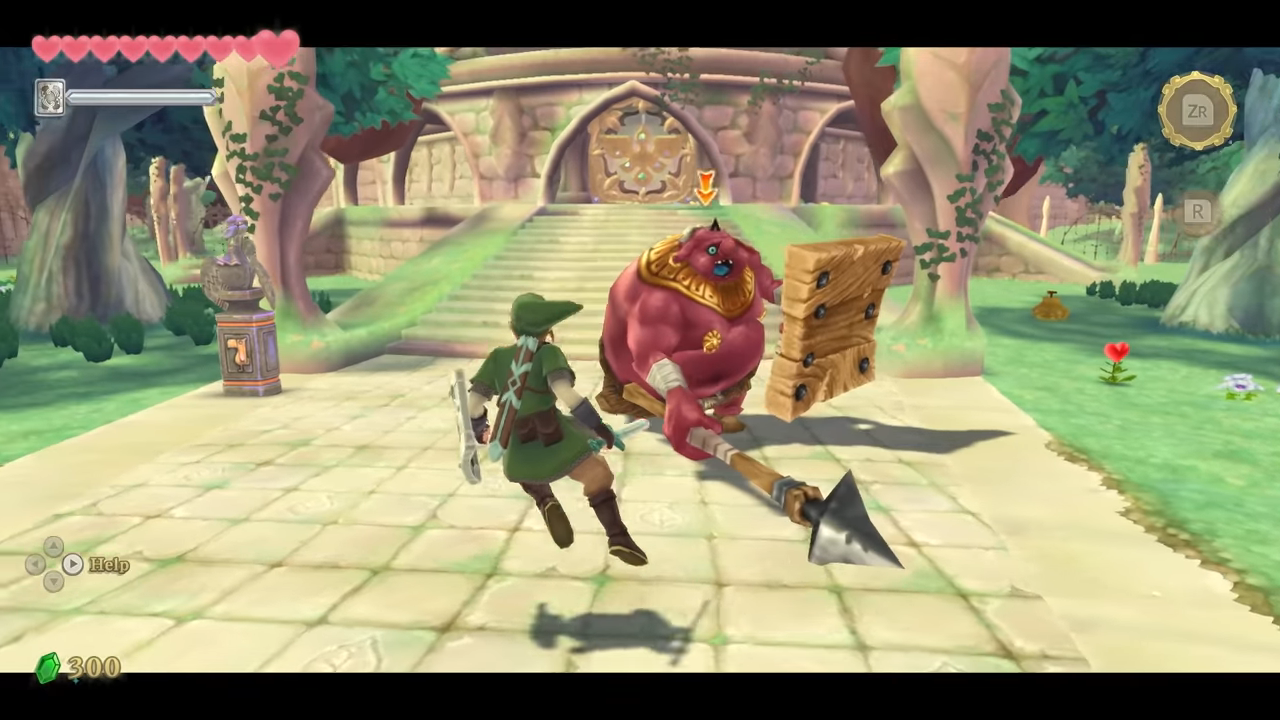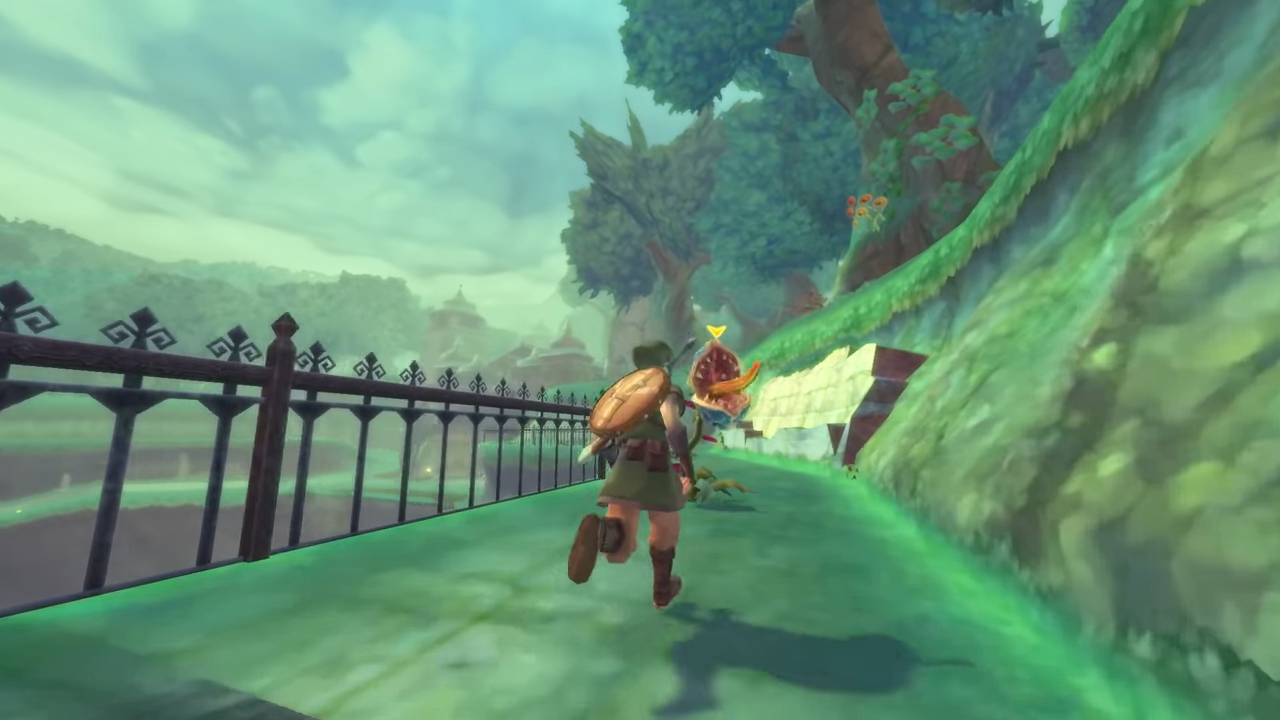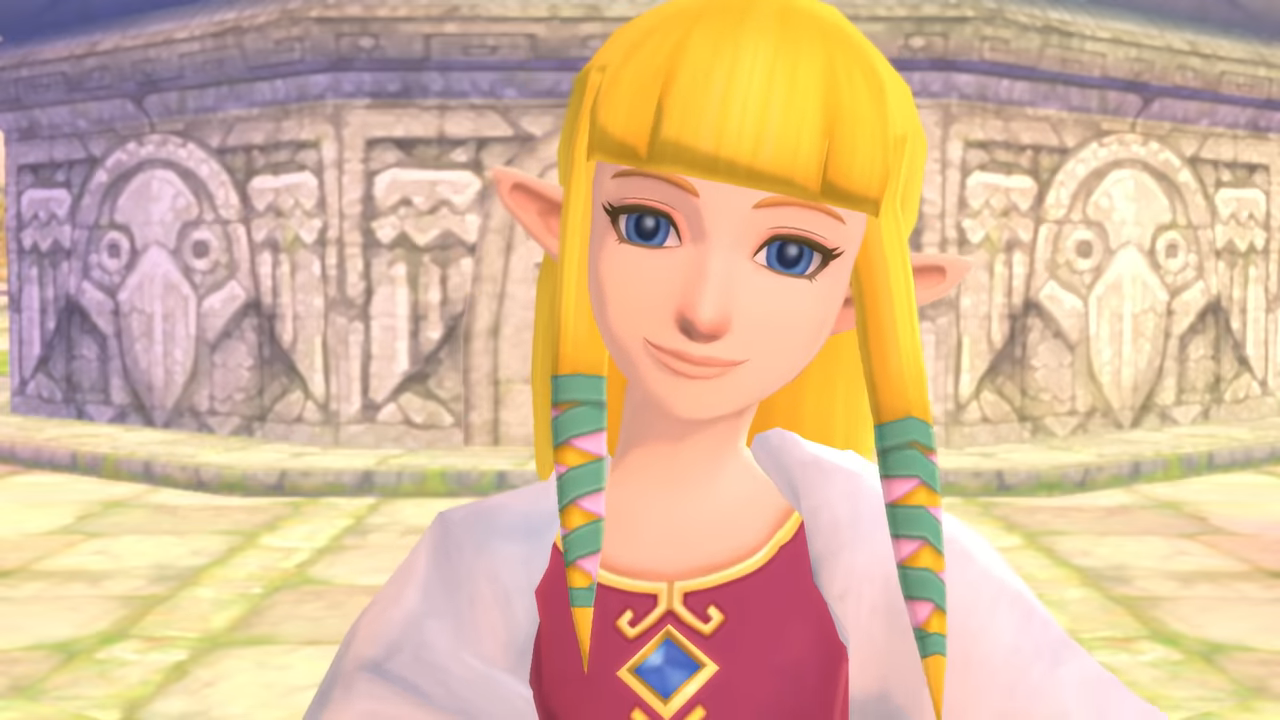But then I played the game, and it opens with the sight of two Loftwings flying to an island that floats in the sky. The music is lush and full and symphonic - even a bit Hisashi? A bit Laputa, a bit Nausicaa? - and then it goes quiet as we see Zelda, who begins to play a harp and sing. It’s The Ballad of the Goddess (which is Zelda’s Lullaby but backwards), and it’s beautiful - sweet and true and somehow familiar, like a memory caught on the wind. And now I’m smitten. Actually her bangs look great. But she only gets two lines in before her Loftwing lands to take a letter to Link - her childhood friend, predictably asleep. A lazy link and a singing Zelda and an adventure that spilleth over with music and colour; with series-best dungeons and some brilliant bosses (the Koloktos fight!); with singing dragons and wiseguy moles and Moblins with animated nipple rings (?!). But also, with romance. I find it easy to love Skyward Sword, because it runs on love; heroics in a major key, with sword in hand and a heart full of hope. Link here is often wide-eyed with wonder, and even the world is sort of blushed throughout with pinks and purple, deep-enchanted by music so good I asked my piano teacher for a ‘Zelda Special’ lesson just to play Fi’s Theme. But it’s the controls that give the game a lightness of feel as well as tone, and whenever I think of Skyward Sword (which is a lot) there’s a flicker of something in the hands, too - a neuronal pre-spark, a muscle memory. It’s been a decade since I’ve played it - I had to borrow someone’s Wii at the time - but it’s this memory of the game-feel that makes Skyward Sword the only 3D-Zelda I’ve wanted to play through again as a game, and not just remember as a legend. Which is not usually the case. Usually, Zelda games are things I love to play, but then also to have played: To think about and talk about and endlessly debate in forum rankings, but rarely actually revisit (except perhaps through an OST playlist). Their overall Zelda-ness lies somewhere outside of the real-time, beat-by-beat action, instead emerging from the accumulation of moments and music, exploration and puzzles, charming characters and tricky dungeons that you initially put-off because there’s too many doors in this entrance to the Forest Temple and it looks a bit overwhelming - all the full-fat satisfactions the series is known for. Then, you get to the end and beat Ganon and Woah, that was really something! And it takes its place in gaming greatness as this whole, complete thing that rarely gets played again. Skyward Sword is different. It’s not even a proper Landscape Zelda, with eyes on the horizon and that gradual grandeur that accrues as you pace - or sail, or glide - across Hyrule. Instead, it’s a very game-y game, almost a Super Zelda Galaxy of tightly-wound environments - with switches and levers and tight-rope walks across unknowably deep, videogame pits. And - aside from the sky - even outside the dungeons the world is all clockwork and close attention. Personally, I liked the density of engagement, and Faron Woods is one of my favourite ever video game places partly because of the way it feels enclosed and contained - as if slightly dislocated from normal space. There’s that focussed kind of freedom as you poke around in a timeslip of gaming strangeness, with music that loops and unscaleable walls at the fringes. It feels sort of vividly unchanging, a particular place-mood to inhabit and explore - like lingering on a picture-book spread without turning the page. But I get why people at the time wanted some looseness, some leg room, some vistas, some stumble-upon, some Breath of the Wild - instead of this linear Zelda you play up-close, in-front. But thanks to those controls this is also different kind of legend, one that happens in your hand and the air around it, in real-time and real space, whereas I think games often happen somewhere else, triangulated between you and the screen. And it doesn’t have that slightly-too-wholesome sense of movement that you sometimes got in previous Zeldas. Notable exceptions aside (hai Majora’s Zora Mask!) I think the games sometimes have a rootedness, a steadiness of pace, that can feel a bit too much like noble heroism; like gameplay in iambic mode, without the elasticity of a jump or a sprint. Here you get playfulness, like cheeky wall-hops and panicky sprints for bright green stamina fruit in the Silent Realm. But also, a sense of closeness from the motion controls, of gamefeel proximity where before I’d only ever considered latency. It’s why I get a bit sad when people say they didn’t get on with the motion controls. I worry: Oh No! Did they play it like tennis with their forearm? But you have to play it like badminton! With flicks of the wrist to swing your sword! Or that slow snaking of your hand, as you ease a steampunk beetle through a crumbling temple tunnel with small tilts of the controller? And what about that quick downwards point that makes Link plummet when skydiving, air whooshing and fabric flapping like a flag in the breeze? To me this all felt brilliant, like Nintendo on its A-game, like progress. And unlike these ’next-gen’ pads I still have to hold with hands clasped in prayer - and their awkward, elbow-y gyro aiming - I can play this splayed on a couch with arms apart and one-hand pointing and everything else has felt rubbish since. This is a game I played once, loved lots, then thought about for nearly a decade. So now I’m excited to revisit this Zelda, as sweet and full-hearted as a Shinkai film, and so alive in the hands as you play it. In 60fps too! But who knows if it’ll still be any good? Maybe it’ll seem too old-fashioned for many. Or maybe it’ll be like 3D World, where people seemed to like it better after Odyssey?
